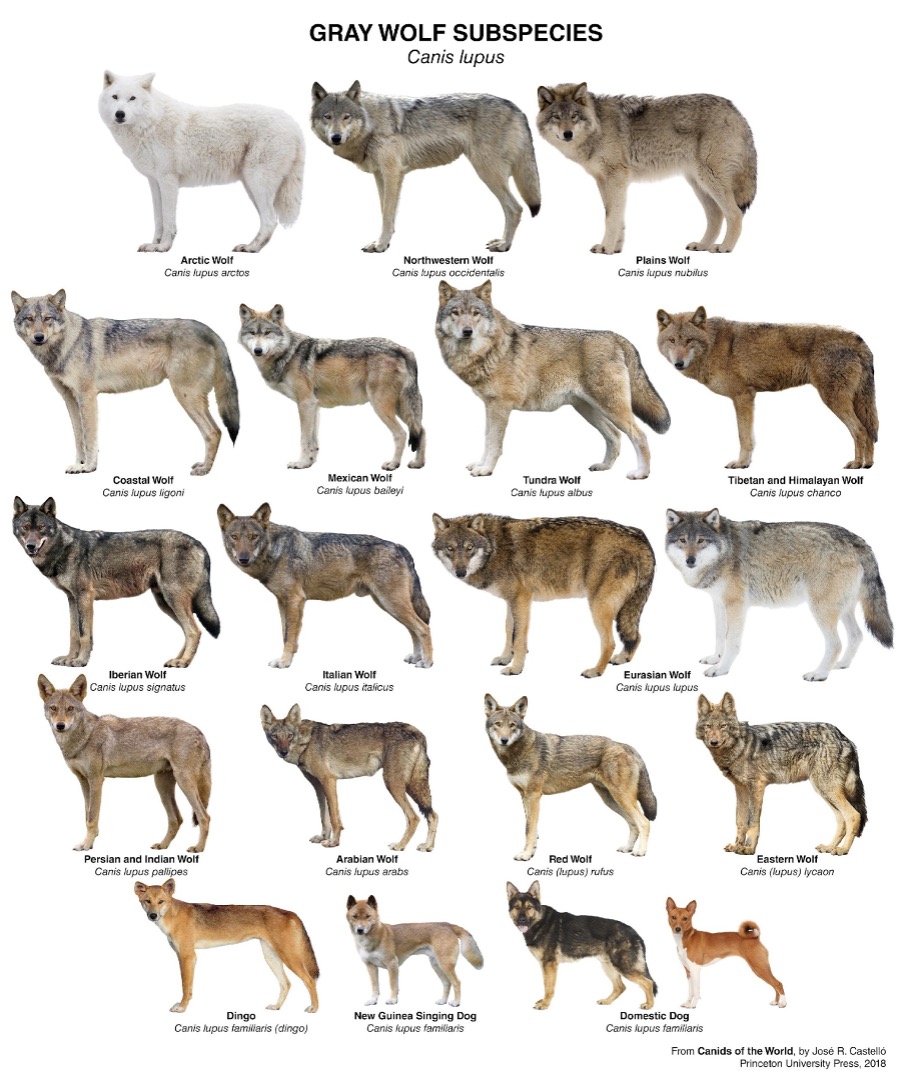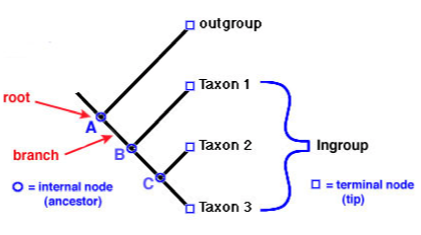Before we start…
General Terminology
Systematics: Study and reconstruction of evolutionary relationships
Taxonomy: Theory and practice of describing, naming, and ordering (biological classification) groups of organisms termed taxa (singular taxon)
Phylogeny: Evolutionary tree that represents a hypothesis about patterns of taxa relationships
Linnean Hierarchy

- Kingdom: Animalia
- Phylum: Chordata
- Class: Mammalia
- Order: Carnivora
- Family: Canidae
- Genus: Canis
- Species: Canis lupus

Cladistics
A method for determining phylogenetic trees – which reflect evolutionary history – based on their shared derived characters.
The relationships are represented graphically in a cladogram.
Cladistic terminology
Character
- An observable feature or trait of an organism (e.g. number of toes on a hind limb, presence of a plantigrade foot, etc.)
- An observed difference from which we infer an evolutionary event
Character state
- Variation of the trait, feature, etc., e.g. five toes in humans, one in horses
- There needs to be at least two of these states
Outgroup
- A taxon that is “outside” or less related to the group of taxa that you are studying (i.e. the ingroup).
- Outgroup characters are considered the most “primitive” character state to which ingroup characters are compared
Character Polarization
- Derived & primitive state by outgroup comparison
Cladogram
A branching diagram that depicts a hypothesis of evolutionary relationships between groups of organisms (taxa) is called a Cladogram.
Systematics - The goal of systematics is to have classification reflect the evolutionary relationships of species. Cladistics classifies organisms according to the order in time that branches arise along a phylogenetic tree, without considering the degree of divergence (how much difference)

Maximum parsimony
- Method for determining preferred phylogenetic tree
- Principle that the simplest solution is the most likely
- Most parsimonious phylogenetic tree is one that requires the least evolutionary change to explain some observed character state
- In practice this means the tree with the fewest character changes is preferred
General Methodology
Make hypothesis of evolutionary relationship
- Identify characters
- Score characters
- Identify ancestral & derived characters (based on character state of outgroup)
- Produce cladogram
Also,
- Examine character polarity
- Compare with alternative hypotheses